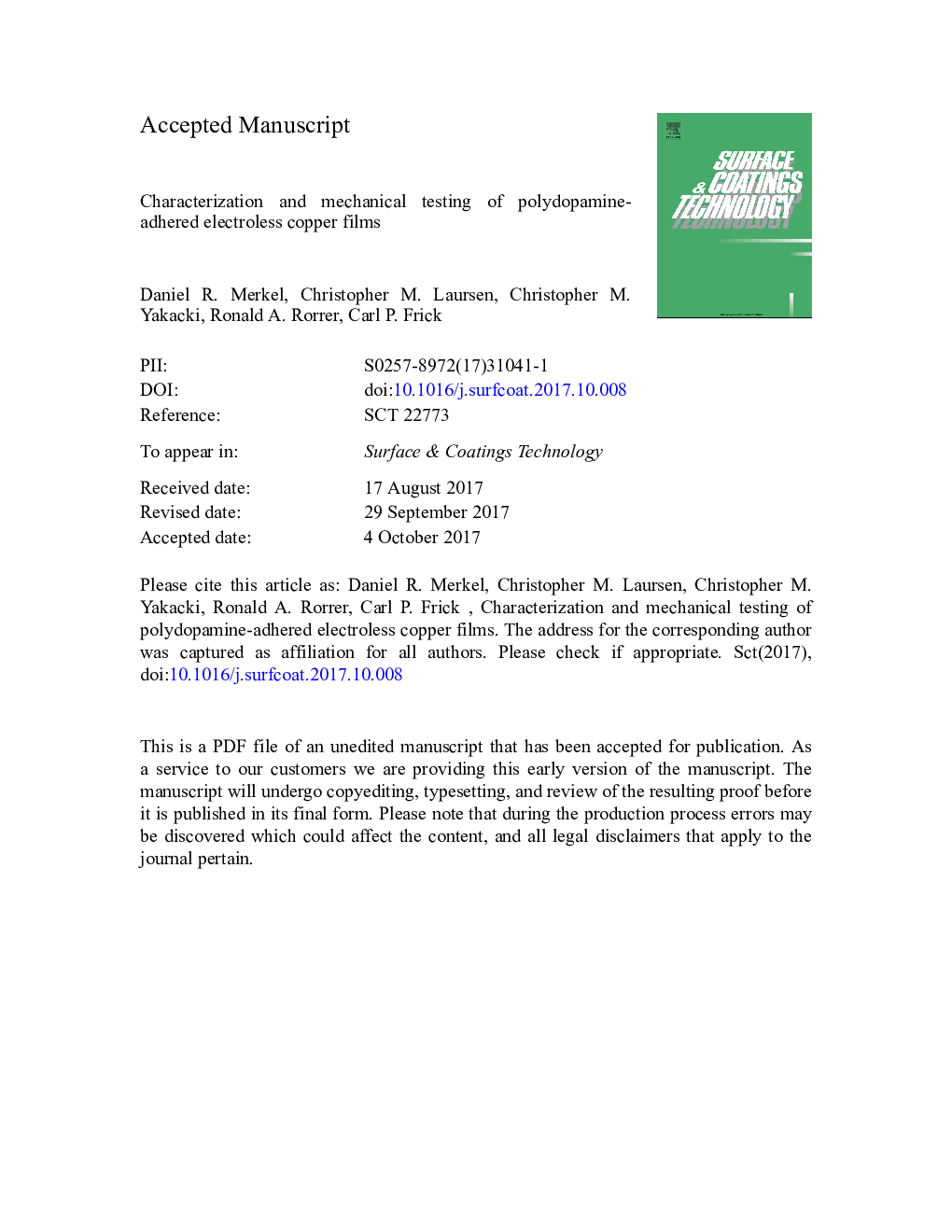| Article ID | Journal | Published Year | Pages | File Type |
|---|---|---|---|---|
| 8024763 | Surface and Coatings Technology | 2017 | 44 Pages |
Abstract
Self-assembling polydopamine has shown great versatility as a multifunctional surface coating. This study investigates the adhesive properties of polydopamine used to bind electroless copper films to several polymer substrates widely used for commercial applications, including polyethylene (PE), polycarbonate (PC), poly(methyl methacrylate) (PMMA), and nylon 6,6. Each substrate was coated in a similar manner resulting in continuous copper films of 52 ± 12 nm in thickness. Transmission electron microscopy revealed a non-preferential polycrystalline microstructure of copper grains averaging 53 ± 17 nm in diameter with a range of 21 nm to 123 nm, indicating there is some overlap of grains in the film. Peel testing, tensile tests, and tribological oscillating wear tests were used to characterize the mechanical performance of the adhered copper films. The nylon substrate had the highest peel strength, 49 ± 5 mN/mm, while the remaining substrates ranged from 5 to 13 mN/mm on average. Coated substrates were strained up to 20% tensile strain to investigate film delamination, buckling, and rupture. Transverse buckling of the films relative to the direction of strain was observed due to Poisson's effect during tension. Films on nylon substrates resisted buckling and rupture up to 20% strain, whereas buckling, delamination, and rupture was observed in the other substrates below 20% strain. Tribological testing revealed that the coefficient of friction was governed by the polymer substrate and was not dependent upon the polydopamine or copper films. As a demonstration of the robust nature of this method, a nylon suture was coated with polydopamine-adhered copper film and tied in a knot to show a large complex deformation state without showing signs of delamination.
Related Topics
Physical Sciences and Engineering
Materials Science
Nanotechnology
Authors
Daniel R. Merkel, Christopher M. Laursen, Christopher M. Yakacki, Ronald A. Rorrer, Carl P. Frick,
